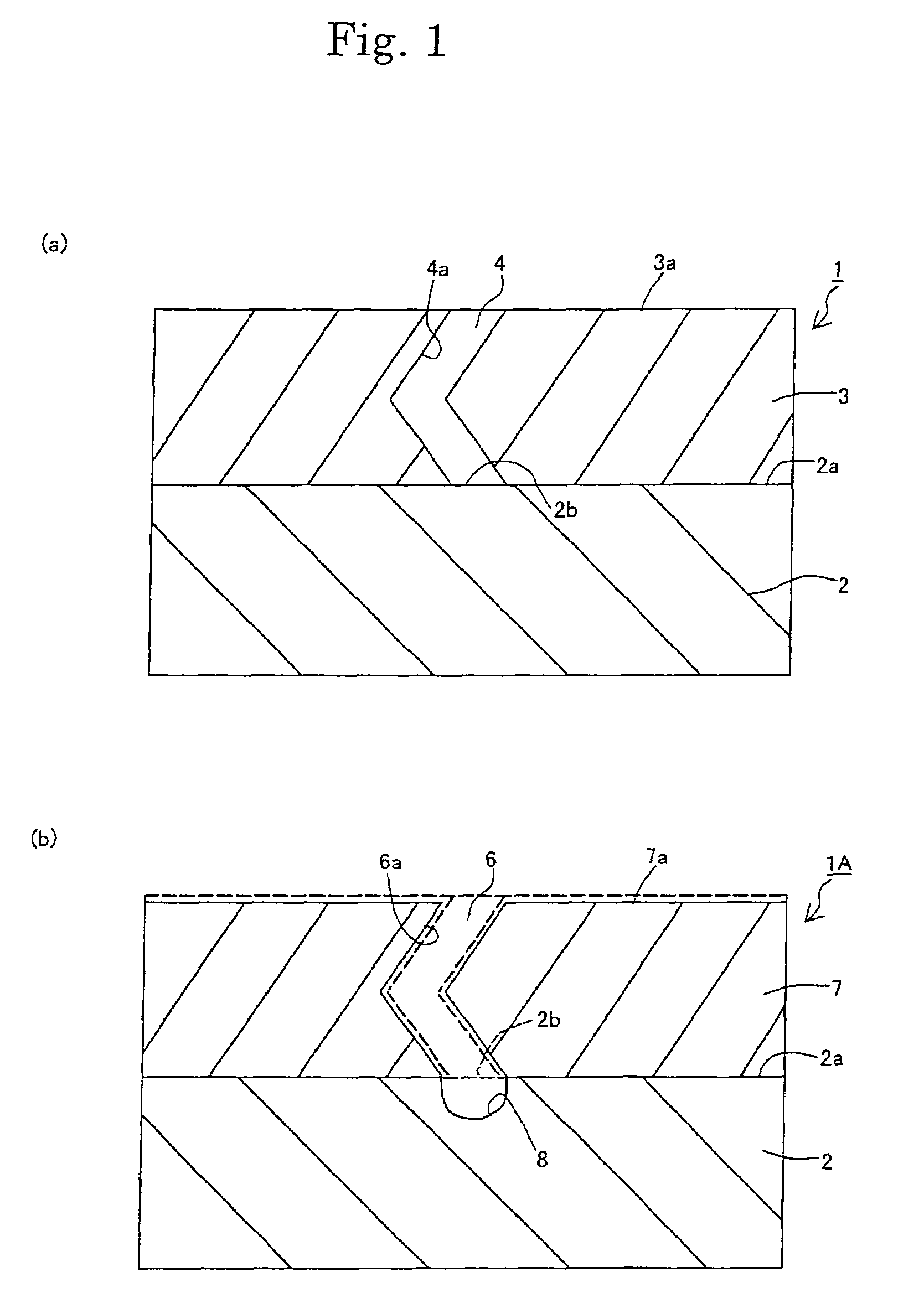Film of yttria-alumina complex oxide, a method of producing the same, a sprayed film, a corrosion resistant member, and a member effective for reducing particle generation
a technology of yttriaalumina complex oxide and yttriaalumina complex oxide, which is applied in the direction of natural mineral layered products, transportation and packaging, coatings, etc., can solve the problems of reducing the holding capacity of by-products in the surface layer, affecting the processing efficiency of semiconductors, and affecting the production yield. , to achieve the effect of reducing the falling or dispersion of particles and reducing the holding capacity of by-products
- Summary
- Abstract
- Description
- Claims
- Application Information
AI Technical Summary
Benefits of technology
Problems solved by technology
Method used
Image
Examples
examples
(Experiment A)
[0088]Powdery materials each having a mean particle diameter (50 percent mean particle diameter) as shown in table 1 were prepared. Yttria particles (examples A1 to A3) with a mean particle diameter of 0.1, 0.5, or 5 μm were measured based on primary particles. The diameters of the other yttria particles (examples A4 to A8) were measured based on secondary particles. Alumina particles (examples A1 to A4) with a mean particle diameter of 0.1, 0.3, 4 and 20 μm were measured based on the primary particles and the other alumina particles (A5 to A8) are measured based on secondary particles.
[0089]In the examples A1 to A8 shown in table 1, powdery materials of yttria and alumina were mixed in a ratio of 57.1:42.9 based on weight. The molar ratio of yttria and alumina was 3:5. In the examples A1 to A3, powdery materials of yttria and alumina were wet mixed using a ball mill and granulated using a spray drier to obtain granules having a mean particle diameter of 40 μm. In the ...
experiment b
(Experiment B)
[0103]The samples covered with the films of the examples A1 to A9 were subjected to heat treatment, respectively, at 1500° C. for 3 hours. The thus obtained films were evaluated as the experiment A and the results were shown in Table 2.
[0104]
TABLE 2Mean particleMean particleTemperatureRatio ofWeight gainDiameter ofDiameter ofof heatPeak strengthPeelPresenceAfterY2O3Al2O3treatmentYAL(420) / strengthOfCorrosion test(μm)(μm)(° C.)YAG(420)MPaCracksmg / hrB10.10.115000.000 3Present0.7B20.50.315000.20643None0.0B35415000.25848None0.0B4202015000.65352None0.0B5505015000.99645None0.1B6808015001.25748None0.1B710010015001.38545None0.1B812012015001.51640None0.8B9YAG powder only15000.00 3Present1.0(40 μm)
[0105]As can be seen from Table 2, in the example B9, perovskite phase was not observed in the film. The peel strength was relatively small, cracks were not found and the weight gain was large after the corrosion test. In the examples A1 to A8, the mixed powder was sprayed and the peel ...
experiment c)
(Experiment C)
[0108]The members of examples C1 to C16 shown in Tables 3 and 4 were produced. In the example C1, a dense alumina sintered body was finished by blasting using #80 abrasive grains and machined to a thickness of about 400 μm to obtain a self-standing test sample. In C2 and C3, YAG powder with a mean particle diameter of 40 μm was sintered at 1600° C. or 1500° C. to produce each sintered body. Each sintered body was then finished by blasting using #80 abrasive grains and machined to a thickness of about 400 μm to obtain a self-standing test sample.
[0109]In each of the examples C4 to C16, a sprayed film was formed as described in the experiment A on each of two substrates. The substrate has a length of 150 mm, width of 150 mm and thickness of 5 mm. The thus obtained sprayed film was subjected to a heat treatment in the examples C4 and C8 to C16. The ratio of the peak strengths, peel strength, the presence of cracks, results of corrosion resistant test, porosity, specific s...
PUM
| Property | Measurement | Unit |
|---|---|---|
| pore diameter | aaaaa | aaaaa |
| thickness | aaaaa | aaaaa |
| mean particle diameter | aaaaa | aaaaa |
Abstract
Description
Claims
Application Information
 Login to View More
Login to View More - R&D
- Intellectual Property
- Life Sciences
- Materials
- Tech Scout
- Unparalleled Data Quality
- Higher Quality Content
- 60% Fewer Hallucinations
Browse by: Latest US Patents, China's latest patents, Technical Efficacy Thesaurus, Application Domain, Technology Topic, Popular Technical Reports.
© 2025 PatSnap. All rights reserved.Legal|Privacy policy|Modern Slavery Act Transparency Statement|Sitemap|About US| Contact US: help@patsnap.com

